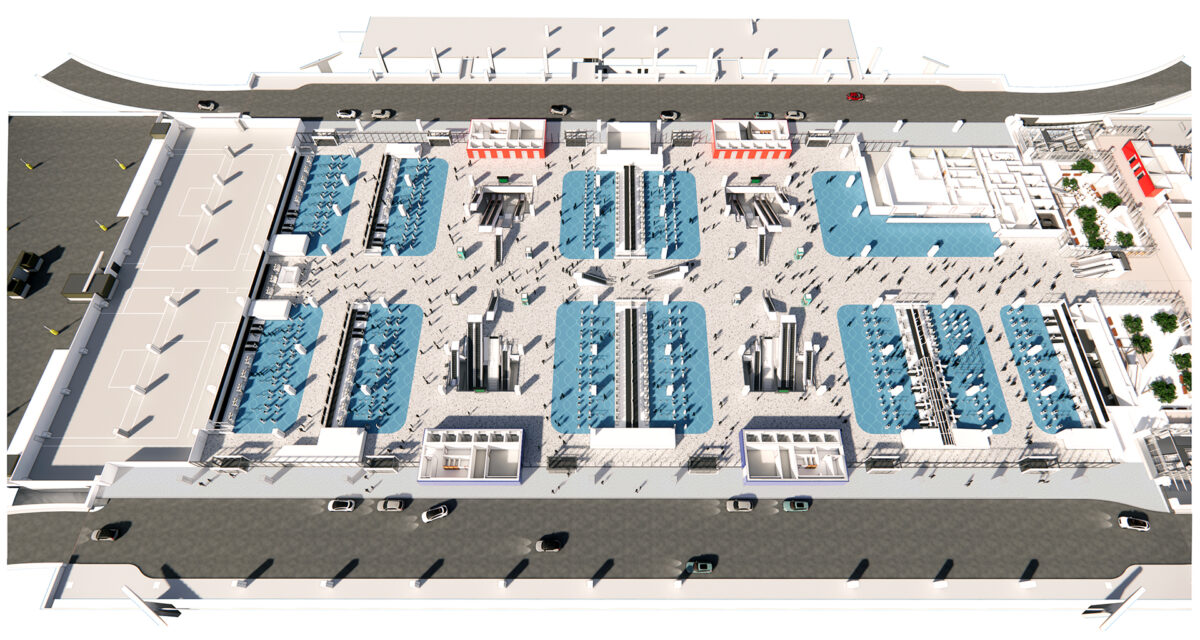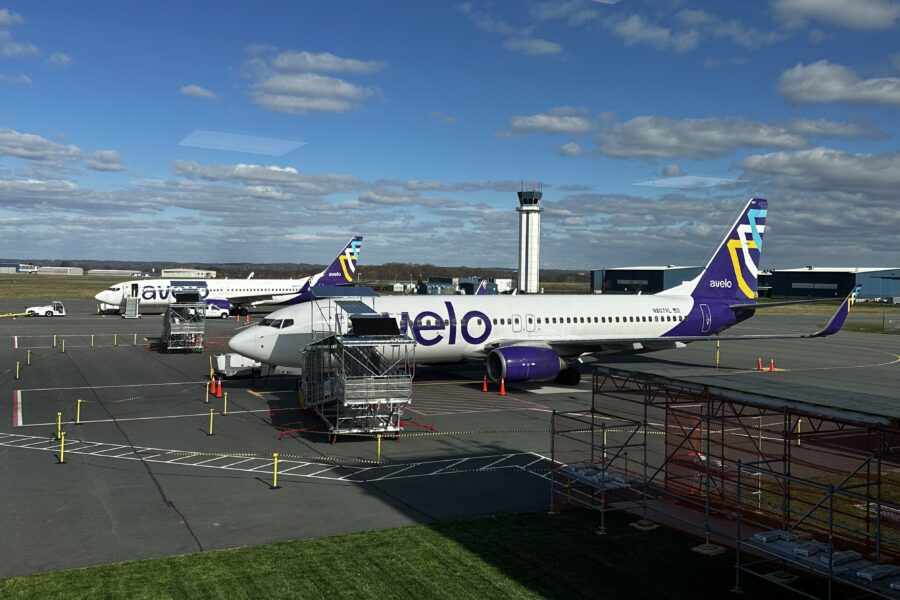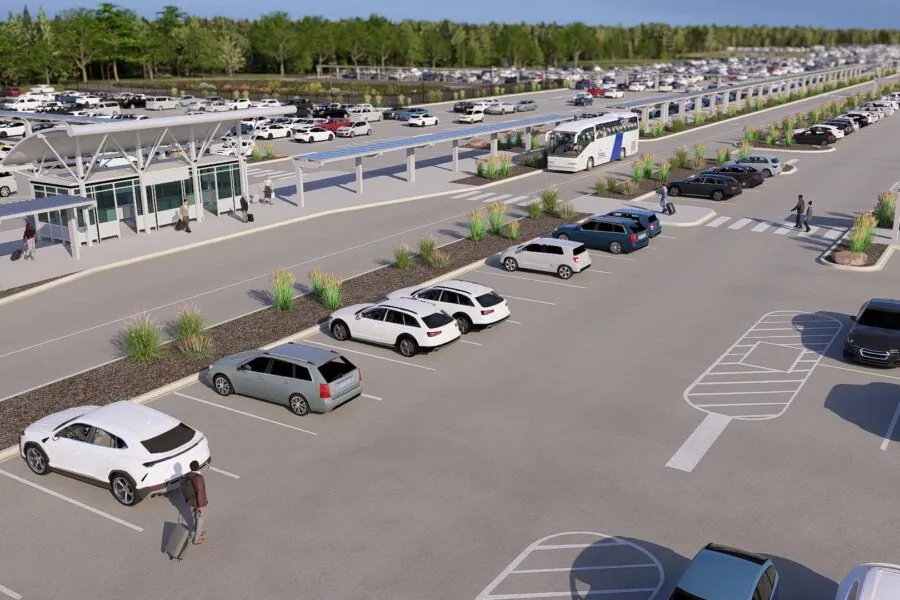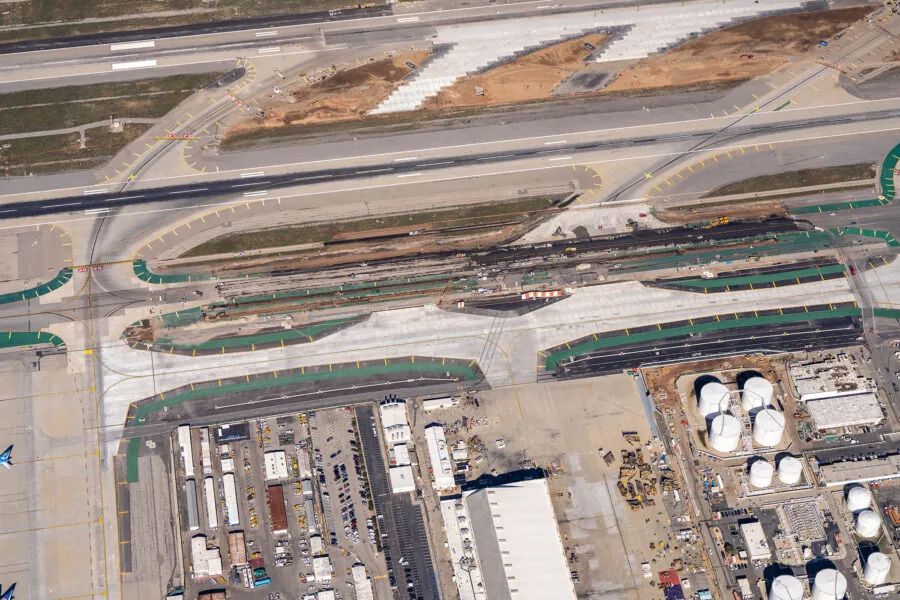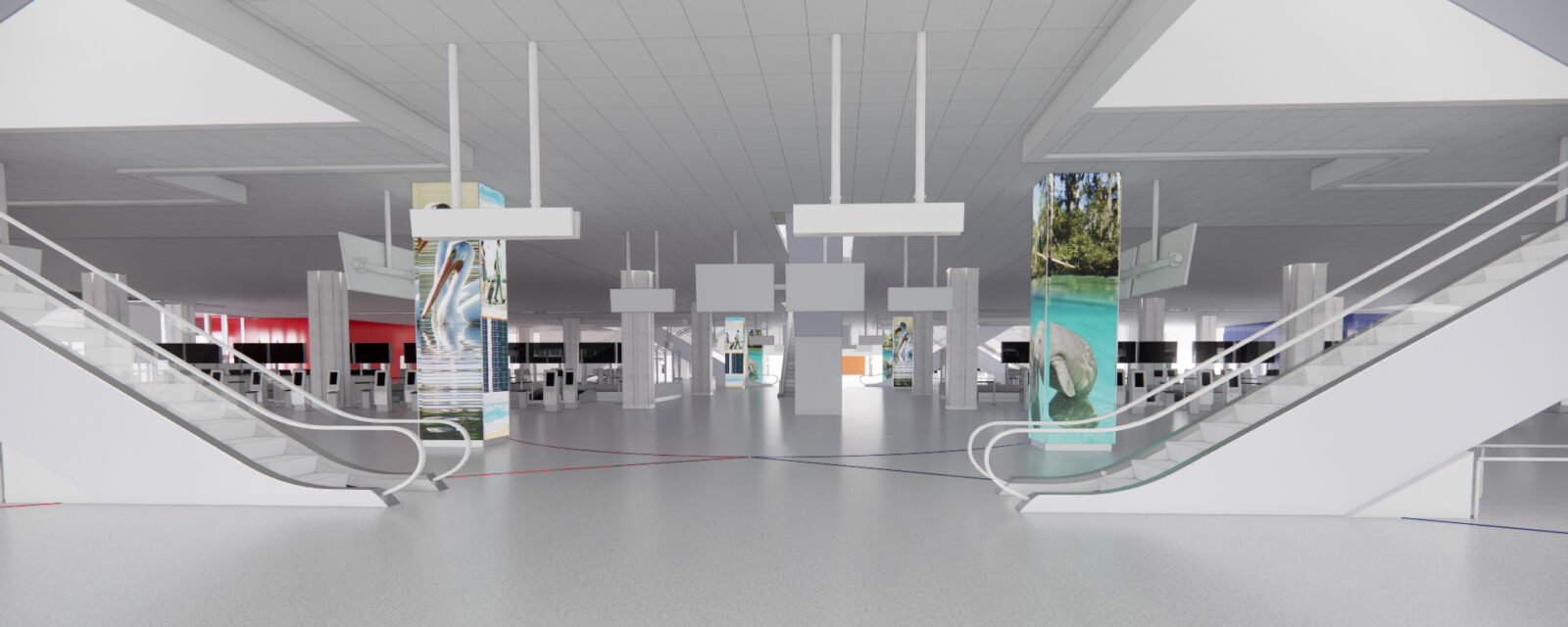
Tampa International Airport Main Terminal Complex Ticketing Area Expansion and Optimization Project Definition Document
Project Details
Solutions
Location
Tampa, FL
Client / Owner
Hillsborough County Aviation Authority
Focus Areas & Services
For decades, the Hillsborough County Aviation Authority (HCAA) has demonstrated exceptional leadership in shaping Tampa International Airport (TPA) into a world-class travel hub. When HCAA envisioned modernizing and expanding the ticketing level of the main terminal complex, they set their sights on creating a seamless, future-ready experience for travelers.
To bring this vision to life, HCAA collaborated with RS&H, a trusted partner for more than 20 years and the original designer of TPA’s iconic terminal in the 1960s. Together, we prepared a detailed Project Definition Document (PDD) to guide the expansion, ensuring the project aligns with HCAA’s bold aspirations for the airport’s future.
Bridging the gap between master planning and construction
The 2022 TPA Airport Master Plan Update (MPU) recommended a concept to enhance the Ticketing Level to meet the program requirement for the 2037 forecasted passenger demand. The 2022 MPU identified three key issues with the existing ticketing level.
- The passenger circulation area width was deemed insufficient to accommodate the existing demand.
- The depth of the passenger queuing area was also deemed insufficient to accommodate the existing demand, resulting in a poor passenger level of service.
- The demand for ticketing and bag drop positions was forecasted to exceed capacity within 10 years.
Expansion and optimization of the ticketing area were recommended to address existing space deficiencies, accommodate passenger growth, and enhance passenger service levels. The PDD prepared by RS&H validated and refined the 2022 MPU concept into the Refined Advanced Planning Concept, addressing all three issues identified by the 2022 MPU. The analysis included a review of peer airports and industry trends, as well as an iterative refinement process with the HCAA Steering Committee and airline representatives. The Refined Advanced Planning Concept layout was selected by the HCAA as the recommended starting point for the design team.
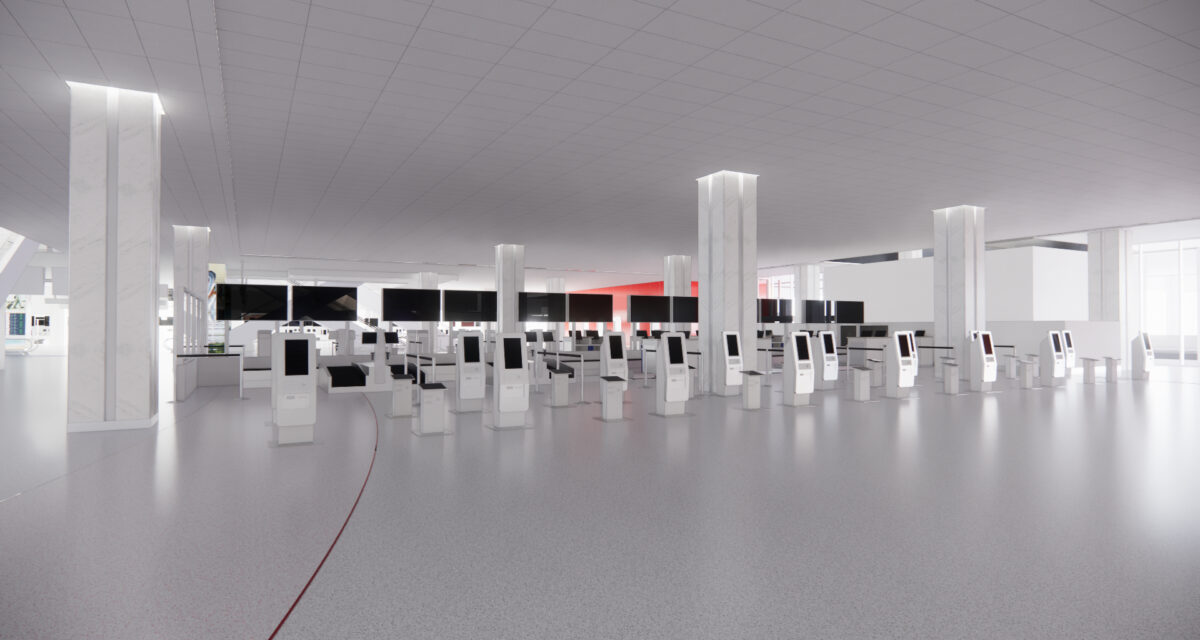
The main terminal complex at TPA is a maze of six levels of interconnected vehicle parking garages stacked atop three stories of passenger processing facilities. RS&H leveraged its internal staff of aviation professionals and collaborated with outside experts to understand the project’s limitations and opportunities, giving HCAA the confidence that the project was realistic and would resolve existing and future demand constraints.
Refining the plan to optimize and expand the ticketing level
The Refined Advanced Planning Concept (RAPC) expands the building and optimizes the existing footprint to support efficient airline ticketing operations and enhance the passenger experience into the future. The RAPC recommends the replacement of the existing airline ticket counter modules with modernized airline ticketing islands arranged in pods, bringing an efficient and flexible layout to replace the traditional linear counter setup. Each pod includes ‘back-to-back’ rows of ticketing positions with baggage takeaway belts behind each row. The layout provides space to accommodate staffed counter positions and/or self-serve bag drop systems. A building expansion to the west would be constructed atop a repurposed parking garage to accommodate a consolidated, remote airline ticketing offices (ATO) space. Challenges to the building expansion included avoiding impacts on existing mechanical, electrical, and plumbing infrastructure, as well as shuttle guideways to TPA’s satellite concourse buildings.
The RAPC would increase the ticket counter positions from 182 to 221 to meet the 2037 forecast demand requirement. It would also provide additional counter queuing depth and circulation area to resolve the current level of service issues. The analysis validated that the proposed project could be implemented in alignment with other CIP projects underway at TPA, which would enhance overall terminal efficiency and reduce implementation cost. The study included rendering development to help HCAA visualize the space, enabling informed decision-making. This analysis was integral to HCAA’s decision to move forward with the RAPC as described in the RS&H-authored PDD.
RS&H concluded the analysis by preparing a construction cost estimate and presenting three potential construction phasing options for the future design team to consider. The phasing options represent a proof of concept demonstrating that construction phasing can be accomplished while the Ticketing Area remains operational and that there are multiple options for how phasing can occur.
At the core of this project lies a commitment to enhancing the functionality and user experience at the airport. By addressing complex infrastructure challenges, this study aimed to deliver real-world solutions that benefit both the airport and its travelers. Through innovative planning and a seamless integration of expertise, RS&H helped identify feasible, forward-thinking strategies to enrich the airport’s operations.
